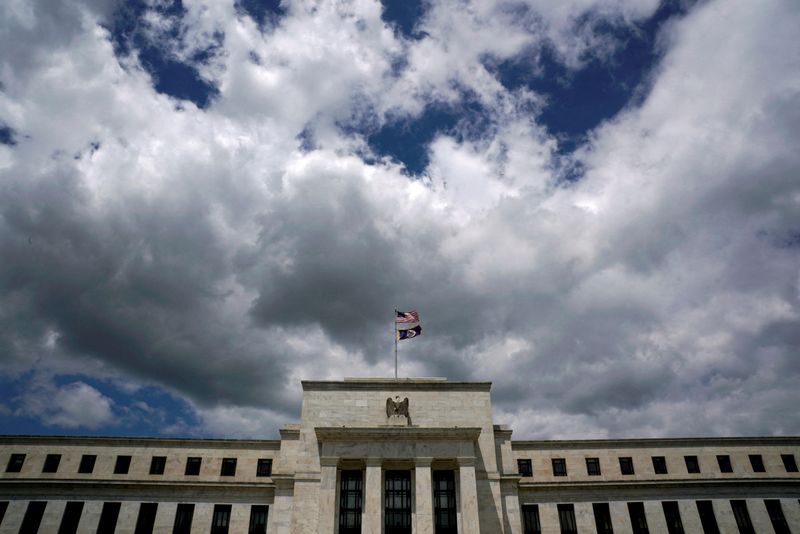By Lindsay (NYSE:LNN) Dunsmuir
(Reuters) -U.S. economic activity saw little or no change from December through early January, while firms reported pricing pressures were mixed and nearly all cited signs of a cooling labor market, underscoring the tightrope the Federal Reserve continues to walk as it tries to reduce inflation while keeping growth and employment humming along.
The U.S. central bank released its latest snapshot on the health of the economy a day after Fed Governor Christopher Waller, an influential voice on its policy-setting committee, said recent data was "almost as good as it gets" with economic growth gradually slowing, the unemployment rate remaining low, and key gauges of inflation hitting the Fed's 2% target rate for the past six months.
"A majority of the 12 Federal Reserve Districts reported little or no change in economic activity," the Fed said in its survey released on Wednesday, known as the "Beige Book," which polled business contacts across the country through Jan. 8. "Consumers delivered some seasonal relief over the holidays by meeting expectations in most Districts and by exceeding expectations in three Districts."
Retail sales were robust in December, data from the Commerce Department showed earlier on Wednesday, suggesting consumers entered 2024 still feeling flush with cash.
Firms in most districts also noted that their expectations for future growth were "positive, had improved, or both" although the approaching presidential election in November was sparking uncertainty for some business leaders, the report showed.
"Numerous contacts...cited U.S. political uncertainty, with one saying it 'weighs heavily on business leaders' minds right now,'" the Dallas Fed reported.
The Fed is looking to begin cutting its policy rate this year after tightening economic conditions for much of the past two years to bring inflation down. It has been held in the 5.25% to 5.5% range since July and while it is set to remain unchanged at the next interest-rate setting meeting on Jan. 30-31, policymakers in December provisionally penciled in three rate cuts this year.
BUMPY PATH
By the Fed's preferred measure, inflation in November was running at a 2.6% annual rate, down from the 7.1% peak reached in June 2022.
But, as Waller also pointed out on Tuesday, policymakers will proceed cautiously in cutting rates while they make sure lower inflation will be sustained.
The bumpy path to returning inflation to 2% was underscored last week by a separate measure of consumer prices, which increased more than expected in December, with Americans paying higher prices for shelter and healthcare. Wage gains also remain above a sustainable level.
In the Beige Book, half of districts reported slight or modest price increases while five also noted that overall price increases had subsided to some degree from the prior period. Most districts cited examples of steady or falling input prices, though only three districts noted their firms expected easing price pressures over the next year, while four districts anticipated little change.
More relief on wage growth appeared to be on the horizon though, with firms in many districts expecting wage pressures to ease and wage gains to fall further over the next year, the survey showed.

The Philadelphia Fed was one of the districts that reported wage and price inflation subsiding as well as consumers more resistant to price increases.
The Cleveland Fed also highlighted concerns about household spending. A large general merchandiser in its district reported lower-income households "had become more reliant on credit cards and 'buy now, pay later' payment options in recent months and was skeptical that these customers could sustain their current level of spending once seasonal promotions ended."